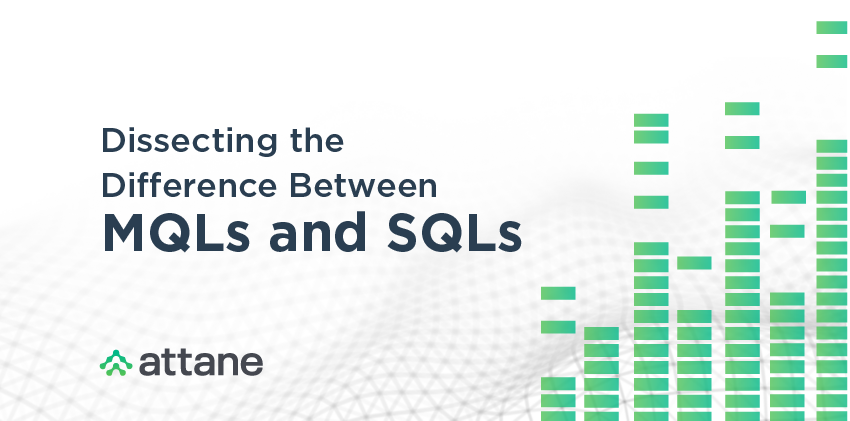Request A Demo
Get a closer look at how we can help you engage with success.
Senior Living

Amid changing consumer preferences, sales and marketing teams have had to collaborate closer than ever to convert leads into move-ins and recoup revenue. According to Enquire, the average senior living sales cycle can be upward of 155 days from initial inquiry to move-in, which isn’t growing any shorter as consumers wait for the distribution of COVID-19 vaccines.
How can senior housing providers identify which leads to prioritize and when? The first step to overcoming this challenge is understanding the difference between MQLs and SQLs.
Marketing qualified leads, or MQLs, are leads who have expressed interest in a community’s offerings but aren’t ready for sales outreach. These leads have completed an activity like filling out a form, reviewing pricing information, downloading a floor plan, etc., and require additional nurturing from marketing before sales can take over.
By asking the right questions through forms, fit calculators, or surveys after an event or tour, marketing has been able to identify the leads who meet or — more importantly — do not meet your minimum criteria and refer qualified leads to the sales team. Sales qualified leads, or SQLs, have been vetted by marketing as viable prospects for sales to pursue. Unlike MQLs who are still evaluating options, SQLs have engaged with your community with quality interactions and have “raised their hand,” so to speak. SQLs meet your ideal buyer personas and have expressed a need your community can provide a solution for.
MQLs can be added to marketing automation workflows that further segment leads into nurture campaigns based on the activities taken on your website. Relevant content topics that match the stage in the buyer’s journey are served to that individual to foster trust and inform the decision-making process. Over time (and dependent on additional actions taken like email clicks/opens, RSVPing for virtual events and tours, etc.), these leads are moved from MQL to SQL status.
At that stage, the lead is transferred to a sales counselor who has ample prospect information to create effective, memorable and personalized outreach with the individual. A sales counselor’s role is to uncover objections and address concerns while building rapport, affirm a commitment from the lead, and convert them into a move-in by securing a deposit. A true sales qualified lead should not have questions about what levels of care you provide or what types of amenities you offer if your marketing team has done its job.
SQLs are educated on their options and need a trusted partner to help navigate concerns while helping them feel confident about making a fully informed, meaningful decision. These factors are why SQLs are most likely to convert into move-ins and are the leads sales should prioritize to meet census goals.
The challenge teams often encounter is that after a form is filled out or an event is attended, the lead is contacted before they’re ready for direct engagement. This early introduction can be perceived as pushy or off-putting, where the lead proceeds to opt out of messaging or stalls in the sales cycle. Teams can be quick to dismiss leads who haven’t converted in the desired time frame, but these could be MQLs who simply aren’t ready to act yet and are being prospected like SQLs.
With an excess of leads and not enough time to properly identify and qualify them based on need, timeline or urgency, the sales team can inadvertently waste precious time prospecting the wrong leads like the example above. To create better sales and marketing alignment and a more seamless MQL-to-SQL handoff, teams can implement a lead scoring model to determine a lead’s sales readiness.
Lead scoring helps organizations shorten sales cycles by identifying the leads who need to be nurtured by marketing, as well as the leads who are demonstrating intent and need to be prioritized by sales for personalized outreach.
To create a lead scoring model, identify the criteria for your community’s ideal resident profile, which establishes your “lead fit.” Marketing assigns and weighs various interactions based on agreed-upon metrics and KPIs that are informed by feedback from the sales team that leverages first- and third-party data. Once a lead indicates interest in your community through initial engagement, the lead can move to an MQL, where the person is nurtured with automation and reengagement campaigns until they pass the lead score threshold. Sales is then notified in the CRM to reach out and is provided visibility into the content the lead has engaged with, emails/messages that were clicked and/or opened, and any additional behavioral data that is helpful to the sales counselor.
Ultimately, differentiating the qualities between MQLs and SQLs will help sales prioritize time with the leads most likely to convert into move-ins. This alignment between teams helps the sales team focus their effort, time and resources to shorten sales cycles and drive the greatest ROI possible.
To accomplish this with consistency across multiple locations, it helps to have a partner with a complete first-party data install and smart marketing technology. With the right tools in place, senior living providers can automate the qualification of leads early in the sales cycle to ensure sales counselors are spending their time on the most promising potential residents, and their partners in marketing can focus resources on nurturing leads who have the best chance of closing.
To dive deeper into strategies and programs for moving MQLs into SQLs faster, check out our webinar: Focus on the Middle to Reach the Top — Why Mid-Funnel Strategies Are Key to Revenue Growth.
Get valuable insights delivered to your inbox